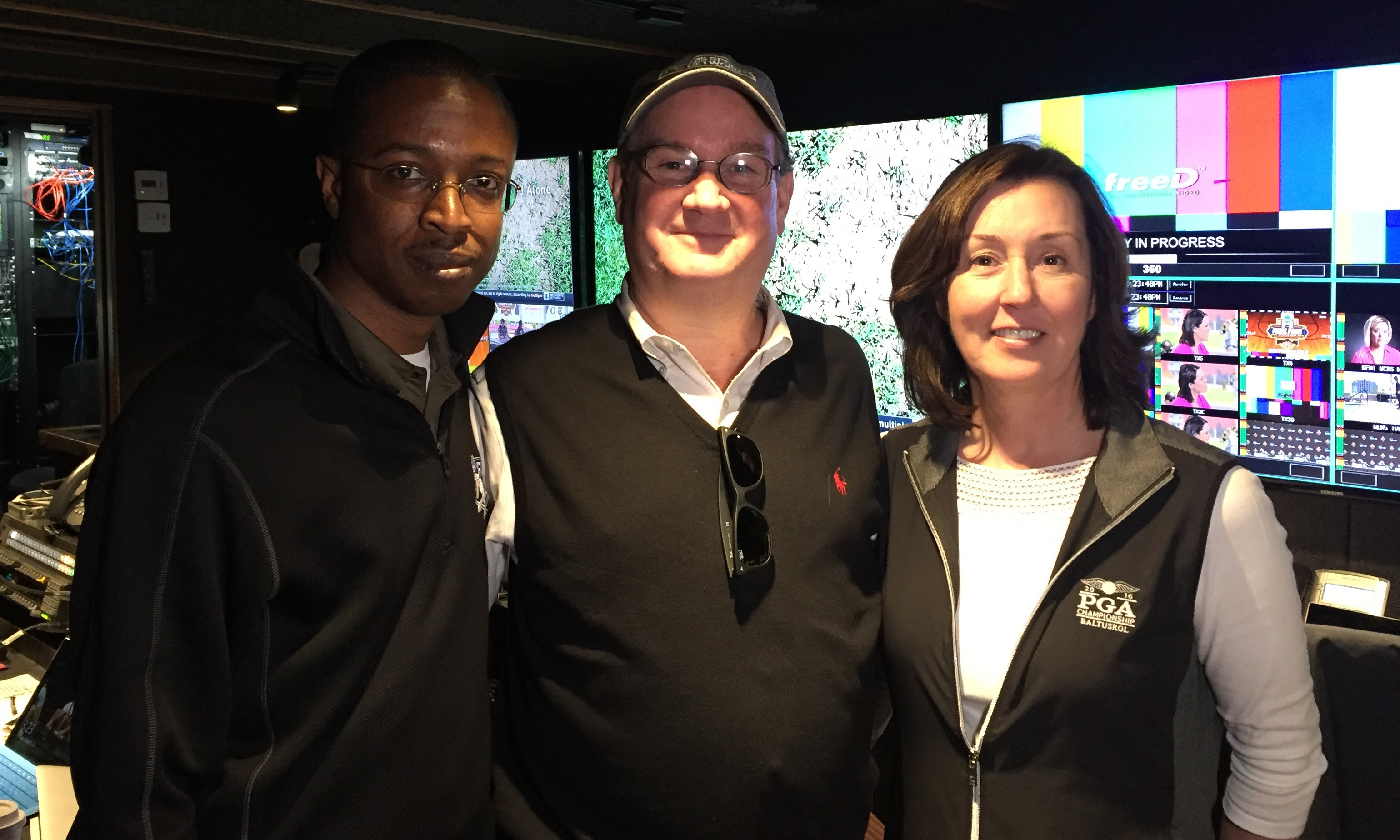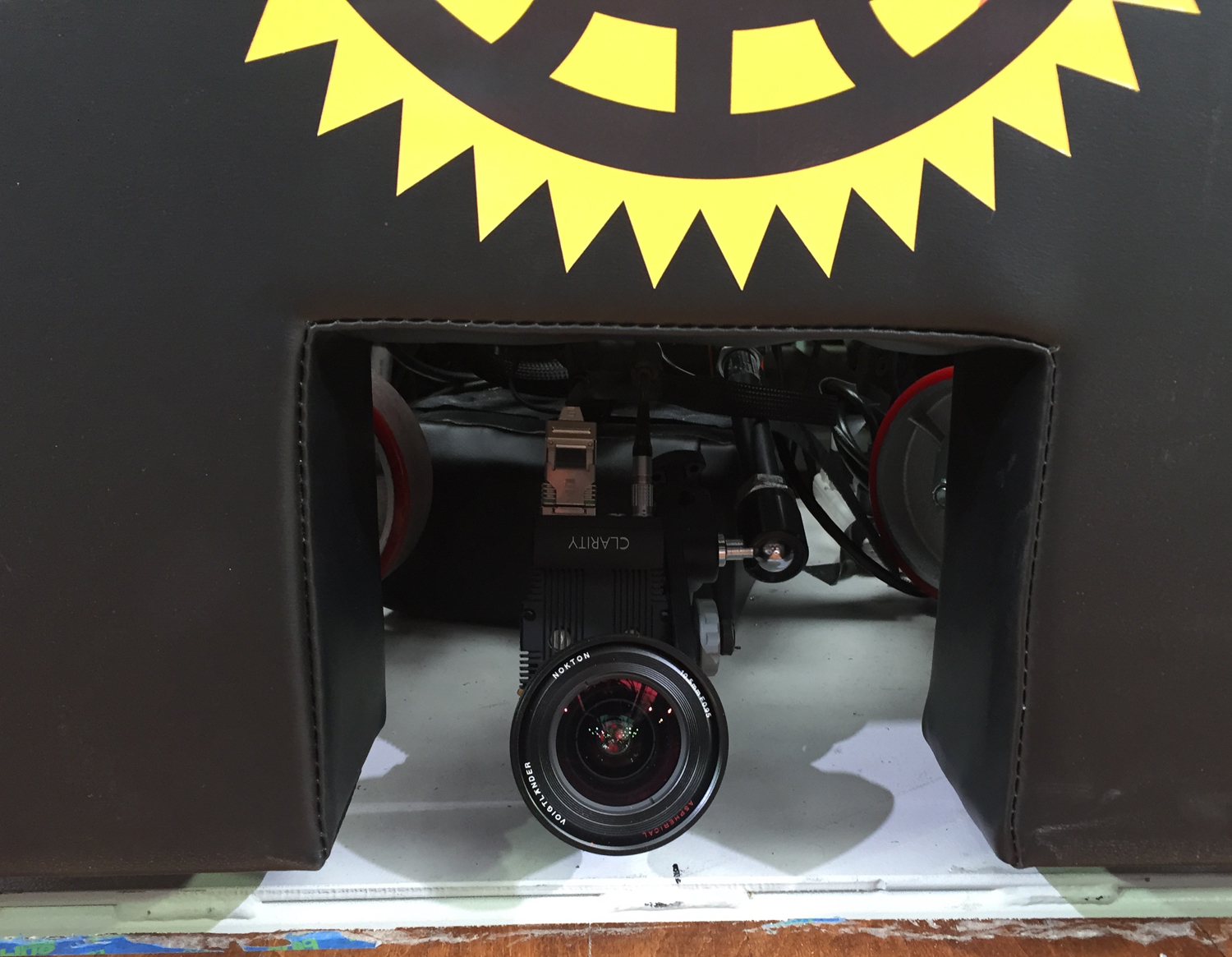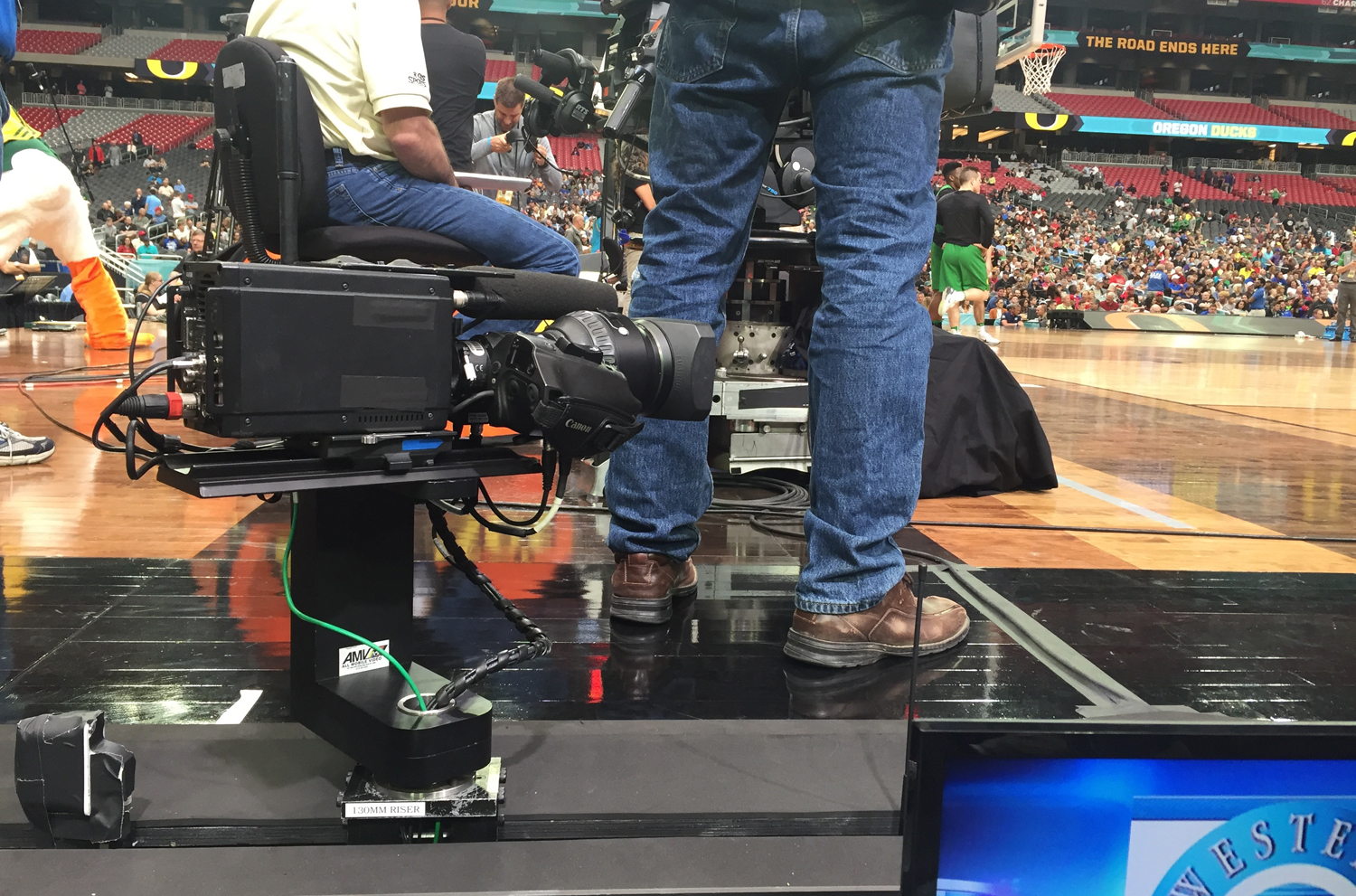Live From Final Four: ‘All-CBS’ Year Does Little To Stifle Creative Collaboration With Turner Sports
CBS Sports’ Patty Power moves into top role as networks deploy VR, 360-degree replay, 8X super-slo-mo
Story Highlights
The collaborative effort between CBS Sports and Turner Sports continues on the operations and engineering at this year’s Final Four, but it’s an “all-CBS” year, and a long-time CBS Sports star, Patty Power, has taken the helm, overseeing the production compound here at University of Phoenix Stadium in Glendale, AZ.

CBS Sports EVP, Operations and Engineering, Patty Power (right) in the truck with Turner Sports Senior Director, Technical Operations, Chris Brown (left) and CBS Sports VP, Remote Operations, Tom McShane
Power, who was promoted to EVP, operations and engineering, last year, has been a critical piece of the puzzle for the seven years that the two media companies have partnered to produce the NCAA Tournament so, for all involved, the transition has been a seamless one.
“It’s been really great,” says Power. “There are so many good people in place that have been here doing this for so long. Where I’m coming from is trying to find ways to things more effectively. I want us to be smart about it. There are little tweaks here and there and those ideas I get to implement now.”
Says Chris Brown, senior director, technical operations, Turner Sports, “For us, that transition had been happening over the past couple of years, so this is a logical progression. But it’s really exciting. In terms of how we worked together and interacted, nothing really changed, but it’s exciting for us to watch as Patty builds her team.”
Power is excited most by the opportunity to keep things fresh and unique. “The challenge is that we all have a habit of going into auto-pilot; they take out last year’s [book]. I wanted to shake us out of that. This is a different venue; it’s an all-CBS broadcast this year versus shared. Let’s look at things a little bit differently and do things differently where it makes sense to.”
The highlights of this year’s production are the first live Final Four VR experience and the re-introduction of 360-degree replays. Both are sponsor-driven through a partnership with Intel, whose Intel Sports Group has become a much more aggressive player in sports-video technology over the past year with the VOKE VR and Replay Technologies (freeD).
A total of 50 cameras are inside the University of Phoenix Stadium bowl, covering both game action and a studio set located in the student section behind one of the baskets. There is a collection of 4K cameras on the backboards. But the true effort has been put behind additional super-slow-motion cameras, which have grown into a hallmark for this event. Nine Sony HDC-4300’s are in various positions shooting at 8X super-slow-motion, and Bexel’s new Clarity 800 camera is also lodged into the base of one of the backboards, shooting at 8X.
Also back in the mix are Rail Cam, Skycam Wildcat, and a fixed-wing aircraft pulling in aerial views above the domed stadium.
Gone this year are the “Team Stream” telecasts that CBS and Turner have offered previously. The idea was to offer team-specific broadcasts with announcers and camera angles friendly to the hardcore fans of the competing teams. There’s a strong possibility that the Team Streams will return when some of the Final Four games return to Turner networks next year, but the their absence has brought a renewed focus for the operations and engineering teams.
“We’ve essentially eliminated two broadcasts, so, yeah, it’s fair to say that it’s somewhat easier,” says Brown. “But I think the key is that, when you have so many things happening and you’re juggling so many different things, you have to find a new rhythm. Otherwise, you start dropping things. It requires a different kind of focus.”
Out in the compound, producer Mark Wolf and director Bob Fishman lead the production team from F&F Productions’ GTX-16, which is serving as the main game truck. The compound is a little leaner this year with the absence of the extra Team Stream telecasts, but the footprint is still robust and includes nine full expando mobile units.
CBS and Turner have again deployed an IP-based asset-sharing EVS network. Connectivity between the compound and broadcast centers in New York City and Atlanta allow a many more editors to create content used throughout the telecasts and on various digital and social platforms.
Famed lighting director Bill Brennan has also been brought in to supplement the venue with additional lighting. His work has helped minimize glare of stadium ribbon boards on the court and improved the images coming chiefly from Camera 1.


